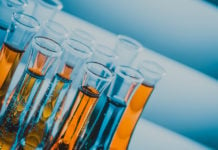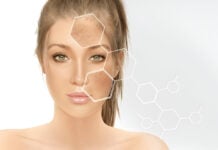Cryotherapy is a process by which cold is applied in a controlled manner for medical purposes. An interesting phenomenon in the dermatology-aesthetic world, cryotherapy was initially popular for the treatment of skin lesions and inflammation but is now thought to help in skin tightening, stimulation of collagen, and wrinkle reduction. The sudden exposure of skin to extreme cold induces biological reaction pathways that increase skin elasticity and enhance the general condition of the skin; therefore, we will explain the working principles, advantages, and recent trends in cryotherapy for skin tightening while discussing its efficacy in wrinkle reduction.
Mechanism of Cryotherapy in Skin Tightening
Cryotherapy works by exposing the skin to subzero temperatures usually employing liquid nitrogen (-196°C), carbon dioxide (-78.5°C), or other cooling agents. Controlled cooling triggers different physiological responses which cause skin tightening:
- Collagen Stimulation: Cold therapy triggers a mild inflammatory response which activates fibroblasts, the cells that ultimately produce Collagen. Increased levels of Collagen contribute to skin firmness and elasticity (Kruglikov & Scherer, 2017).
- Vasoconstriction and Vasodilation: Lately, we have been greatly exposed to cold, causing vasoconstriction to minimize blood flow into the skin and tighten it. However, when the skin warms up, vasodilation occurs to increase blood flow and nutrient supply to the skin (Gupta & Sharma, 2021).
- Reduction of Fine Lines and Wrinkles: Cryotherapy manifests in reduction of oxidative stresses and minimize the degradation at elastin fibers that further create a smooth appearance to the skin, thus young skin (Fujimura et al., 2018).
- Enhance Lymphatic Drainage: Cold treatment is lymphatic flow promoting, thus for detoxification and removal of excess liquids that can reduce puffiness and improve skin tone (Hession et al., 2022).
Types of Cryotherapy for Skin Tightening
- Whole-Body Cryotherapy (WBC): Whole-body cryotherapy is a treatment that involves exposure of the full body to extremely low temperatures ranging from -110 to -140 degrees Celsius for a short time period of about two to four minutes. As a result of whole-body cryotherapy, systemic anti-inflammatory and collagen-increasing effects are achieved that benefit not only the skin but the whole body as well (Bouzigon et al., 2016).
- Localized Cryotherapy: Localized cryotherapy employs cryogenic devices or cooling probes that can be directed to specific areas of the skin. Such a technique is primarily used for facial rejuvenation so that targeted cold therapy can be applied to stimulate collagen formation in areas susceptible to wrinkles, as seen around the eyes and mouth (Kruglikov & Scherer, 2017).
- Cryofacials: Cryofacials, or Frotox, use a handheld device to apply liquid nitrogen vapour directly to the face. This treatment tightens pores, reduces swelling, and improves skin texture with no injectable methods or downtime required (Gupta & Sharma, 2021).
- Cryolipolysis (Fat-Freezing): Although often used to improve body shape, cryolipolysis (CoolSculpting) has been adapted for facial applications in tightening sagging skin and contouring the jawline (Avram & Harry, 2009).
Benefits of Cryotherapy for Skin Tightening
- Less Invasive and Pain-Free: Cryotherapy provides a solution for the non-invasive skin tightening procedure causing very little discomfort or downtime, unlike surgical facelifts (Fujimura et al., 2018).
- Immediate and Long-Term Effects: Immediate vasoconstriction renders visible skin tightening after a session, while long-term effects of collagen remodeling and reduced wrinkles are seen after (Kruglikov & Scherer, 2017).
- Decreased Inflammation and Redness: Cryotherapy minimizes irritation and redness of the skin; hence an effective remedy for most sensitive skin types (Gupta & Sharma, 2021).
- Going with Other Interventions: Cryotherapy works very well with the potential treatments such as microneedling, radiofrequency, and chemical peels (Hession et al., 2022).
Clinical Evidence Supporting Cryotherapy for Skin Tightening
- Flaunting an increased fibroblast activity for enhanced new collagen synthesis and improvement of skin elasticity, cryotherapy has been reported by Kruglikov and Scherer (2017).
- According to Fujimura et al. (2018), the application of cold resulted in a decrease in wrinkle depth and an increase in dermal thickness, both of which contributed to firmer skin.
- Cryotherapy was found to increase microcirculation and facilitate the return of skin firmness and hydration levels, Gupta and Sharma (2021) state.
- Hession et al. (2022) found that localized cryotherapy uses considerable decrease in puffiness and sagging of the jawline in the 6-week period.
Potential Risks and Considerations
Cryotherapy is generally safe but has a few considerations and risks like:
- Temporary reddening and numbness: Slight irritation of the skin with numbness may result but will spontaneously resolve in a matter of a few hours (Gupta & Sharma, 2021).
- Cold burns and frostbite: There may be damage to tissue if the application is not properly done, which necessitates the administration by a professional (Fujimura et al., 2018).
- Not for all skin conditions: It would be advised that people with such skin types as rosacea, cold-induced urticaria or those quite sensitive to their skin should check with their dermatologist for approval in the adoption of cryotherapy (Bouzigon et al., 2016).
Future Directions in Cryotherapy for Skin Rejuvenation
The coming days do promise glories for dermatologic cryotherapy, with research presently being oriented toward:
- Advanced cryogenic delivery systems for precise and controlled cold exposure.
- Therapies that combine cryotherapy with laser treatments and stem cell-based skincare for improved efficacy.
- Individualized cryotherapy regimens utilizing AI-based diagnostics to customize treatments for specific skin needs.
Cryotherapy has invented a non-invasive treatment for skin tightening, collagen development, and wrinkle reduction. Controlled cold exposure in cryotherapy starts biological reactions, which further enhances the elasticity of the skin, improves blood flow, and finally improves the health of the skin over time. In conjunction with the rapid advances in the cryogenic technology and clinical research, it is clear that cryotherapy is slowly becoming one of the most important forms of treatments in the scope of aesthetic dermatology.
References
- Avram, M. M., & Harry, R. S. (2009). Cryolipolysis for subcutaneous fat layer reduction. Lasers in Surgery and Medicine, 41(10), 703-708. https://doi.org/10.1002/lsm.20864
- Bouzigon, R., Grappe, F., & Ravier, G. (2016). Whole-body cryotherapy: Empirical evidence and theoretical perspectives on its applications in sports medicine. Sports Medicine, 46(12), 1601-1618. https://doi.org/10.1007/s40279-016-0538-9
- Fujimura, T., Haketa, K., Hotta, M., & Kitahara, T. (2018). Effects of cold exposure on skin elasticity and wrinkles. Journal of Dermatological Science, 91(3), 217-223. https://doi.org/10.1016/j.jdermsci.2018.03.002
- Gupta, A., & Sharma, Y. (2021). Localized cryotherapy and its impact on facial rejuvenation. Journal of Cosmetic Dermatology, 20(4), 1025-1033. https://doi.org/10.1111/jocd.13892
- Hession, M. T., Chia, C., & Markova, A. (2022). The role of cryotherapy in aesthetic dermatology. Dermatologic Surgery, 48(2), 199-210. https://doi.org/10.1097/DSS.0000000000003437
- Kruglikov, I. L., & Scherer, P. E. (2017). Skin aging and cryotherapy: A new perspective. Aging, 9(6), 1256-1262. https://doi.org/10.18632/aging.101233












